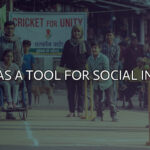Did you know the average person gets almost 10,000 minor injuries in their lifetime?
And that’s the average person. Clumsy people are prone to way more.
Since minor injuries can happen anywhere, it’s important for people to have a portable medical kit they can keep at home or use on the go.
Keep reading to find out 3 benefits to having a portable medical kit with you at all times.
The Need for First Aid With Minor Injuries Is Common
With each person averaging nearly 10,000 minor injuries in their lifetime, that’s a lot of accidents each day. There are 8 common accident types:
- Cuts and scrapes
- Burns
- Insect bites and stings
- Splinters
- Sunburns
- Nosebleeds
- Fractures
- Sprains, strains, and tears
Some of these can easily be managed with a first aid kit while others will require the help of a medical professional.
No matter what your lifestyle, they are medical kits out there for you designed with your lifestyle in mind. Common kits include:
- Team sports first aid kits
- Contractor first aid kits
- Vehicle first aid kits
- OSHA first aid kits
And many more. You can read more here.
Quick Action Leads to Less Infection
A good and well-stocked medical kit includes supplies to treat wounds, bandage cuts and scrapes, and medicine to prevent infection.
Acting quickly to a minor injury can help to prevent infection from settling in the wound. By cleaning and bandaging the wound, you’ll keep dirt and debris out, allowing the wound to heal without medical care.
What Should My Portable Medical Kit Include?
The Mayo Clinic outlines a lot of supplies to put in your portable kit, but we have condensed the list to the basics that are most important.
What to include when making a first aid kit:
- Adhesive tape
- Bandages
- Sterile bandages
- Rubber tourniquet
- Eyeshield/pad
- Instant cold packs
- Antiseptic solution and ointment
- Scissors
- Tweezers
- Latex gloves
Of course, depending on what your lifestyle is and where the first aid kit is located, the supplies would change.
It Could Save a Life
Some minor wounds don’t seem very minor. Especially in people who bleed easily and have a hard time stopping the flow. Children and elderly adults are most prone to accidents.
With more than 25 million nonfatal accidents in a year, some of these situations are bound to be more severe than others.
Having medical first aid kits in your car and your home can help minor injuries from becoming big emergencies. For cuts that bleed, you can use the supplies to stop the flow. You can bandage cuts to reduce the risk of infection.
For emergent situations, first aid kits still come into play. Tourniquets can help control heavy bleeding, cold packs can help with breaks, and bandages can aid in controlling or holding together wounds until emergency services show up.
Prepare Your Life With a Portable Medical Kit
Now that you understand how a portable medical kit could save a life and benefit you in being prepared for all situations, it’s time to decide if you want to purchase one or build your own.
You can read more about lifestyle and health on our blog.















